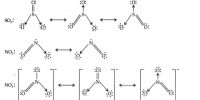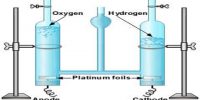Root-mean-square (r.m.s.) Velocity
A result of the molecular collisions is that the speeds of all the molecules are not the same. Some have very high velocities, while others have lower velocities. In using the kinetic theory of gases it is convenient to assume a common value for all the molecules. An average velocity could be used, but theoretically it is more exact to use what is known as the root-mean-square (r.m.s) velocity. If n1 molecules have velocity c1, n2 molecules hate velocity c2, n3 molecules have velocity c3 and nn molecules have velocity cn, then;
c = (c-2)1/2 = √[( n1c12 + n2c22 + n3 c32 + … … … nn cn2)/n]
where, n = n2, n2, n2, ….. ….. = Total number of molecules
The average velocity = c = [(n1c12 + n2c22 + n3 c32 + … … … nn cn2)/n]
It may be seen that the avenge velocity and the r.m.s. velocity do not have the same magnitude.
Example: In a system of 50 molecules. 15 have velocity 2.0 x 102 m.s-1; 30 have velocities 4.0 x 102 m.s-1 and 5 have velocities 8.0 x 102 m.s-1 r.m.s. Calculate the velocity of the molecules.
Solution: From equation,
c-2 = [15(2.0×102)2 + 30(4.0×102)2 + 5(8.0 x 102)2]/50
= 17.2 x 104 m2s-2














